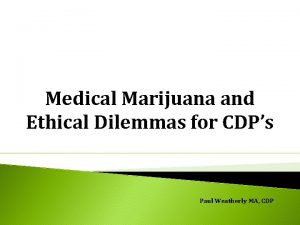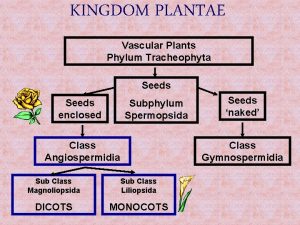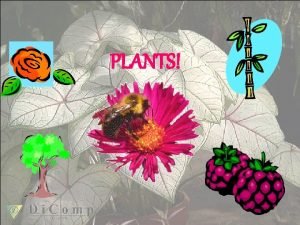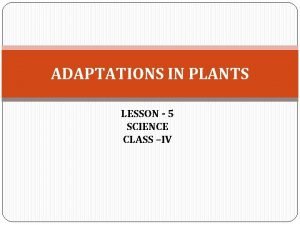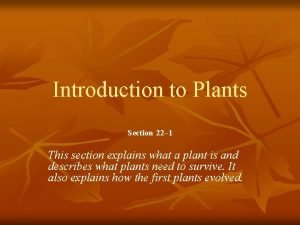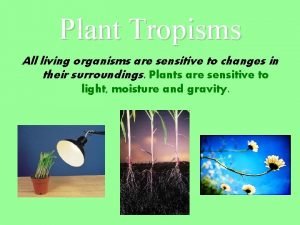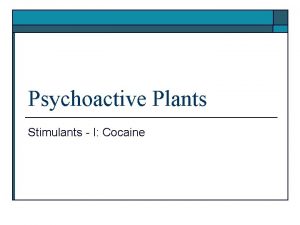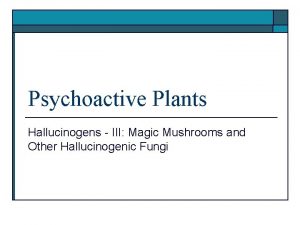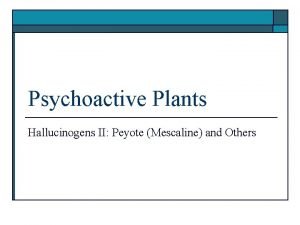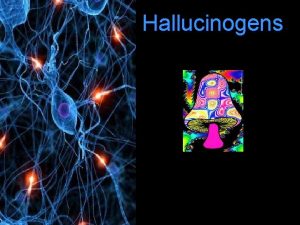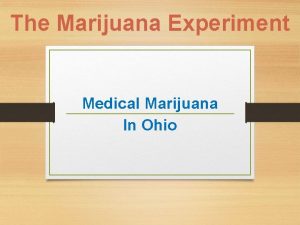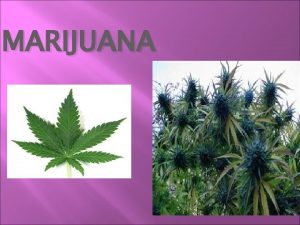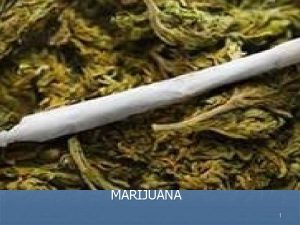Psychoactive Plants Hallucinogens I Marijuana Marijuana o o
























- Slides: 24

Psychoactive Plants Hallucinogens - I: Marijuana

Marijuana o o o Cannabis sativa is one of the oldest cultivated plants in the world Origin Early history n n n o o China Scythians Spread though Asia, Africa, and other area Later History North America Recent History New Laws in England

Botany of Cannabis sativa o o Dioecious annual with male and female flowers on different individuals Distinctive compound leaf with seven leaflets The hallucinogenic properties concentrated in the resin which is produced by glandular trichomes Maximum amount of resin on female plants, especially unfertilized female flowers


Female Plant Male Plant

Biochemistry o o Hallucinogenic properties concentrated in the resin with the compound Delta-9 -tetrahydrocannabinol (THC) the main psychoactive compound THC belongs to a unique group of phenolic compounds called cannabinoids

THC o Concentration of THC varies greatly with the variety, sex, climate, growing conditions Sinsemilla varieties have highest THC n Varieties cultivated for fiber (hemp varieties) have the lowest levels of THC Potent varieties Sensimilla hybrids result from crossing C. sativa and C. indica n o o

Effects of Marijuana o o o Euphoria and calmness Even moderate use impairs learning, short-term memory, and reaction time THC is fat-soluble and accumulates in body tissues and may remain for days One of the best studied effects is decreased sperm production Decreased testosterone levels have also been reported

Cannabinoid Receptors o o Humans have cannabinoid receptors in the brain, CNS, and other tissues Functions of these receptors and the endogenous ligands not clear At least two subtypes of these receptors exist CB 1 and CB 2 - evidence also suggests other subtypes G-protein linked receptors

Cannabinoid Receptors o o CB 1 cannabinoid receptors - most prominent in the brain and CNS and appears to mediate the psychoactive properties CB 2 cannabinoid receptors - appear to be almost exclusively expressed in the peripheral tissues - especially immune tissues and may modulate responses of the immune system

Natural Cannabinoids o o o First natural cannabinoid discovered in 1992 Anandamide is an endogenous ligand to the cannabinoid receptors in brain – function not completely determined – apparently binds to CB 1 Other natural ligands have since been identified When activated, CB 1 receptors seem to suppress the release of one or more transmitters – glutamate, dopamine, GABA – this in turn may affect learning, movement, and memory Show some interaction with opiate receptors

Cannabinoid Receptors

Cannabinoids o o CB 1 receptors are extremely abundant in the brain – more so than most other G-protein linked receptors – 10 x more abundant that m opioid receptors (responsible for pain relief and euphoria from opiates) Studied extensively in vertebrates and invertebrates – highly conserved molecule suggesting a long evolutionary history (500 million yrs) suggesting that cannabinoids play and important basic function in animal physiology

Medical Uses of Marijuana o o Marijuana has been used as a medicinal plant by cultures throughout the world In modern medicine, several well documented uses n n n glaucoma treatment aid to chemotherapy increase appetite in AIDS patients and senior citizens reduce tremors in MS patients analgesic

Glaucoma Treatment o Glaucoma - eye disorder characterized by increased pressure n n o This can damage the optic nerve and lead to blindness Leading cause of blindness in the U. S. Marijuana - either smoking or ingesting oral preparations can decrease ocular pressure smoke is especially effective

Aid to Chemotherapy o o o Chemotherapy for cancer often has side effects that result in nausea, vomiting, and loss of appetite - often results in severe weight loss - patients weaken considerable - often impairing recovery Marijuana helps offset some of these effects and especially increase appetite Also growing evidence of anti-cancer activity

Other uses for appetite improvement o o AZT and other drugs used to treat AIDS result in nausea and anorexia Like use of chemotherapy in cancer patients, this commonly causes severe weight loss which impairs the bodies ability to fight Marijuana helps nausea and increases the appetite thereby counteracting weight loss Anorexia also a problem in some senior citizens

Multiple Sclerosis o o o Multiple sclerosis causes the destruction of patches of myelin in the brain and spinal cord Demyelination produces many problems, so that victims eventually cannot walk, sit up, and become crippled and bedridden often with terrible muscle spasms No effective treatment for MS - medications provide some relief from muscle spasms; however, the drugs lead to addiction Marijuana reduce spasms in patients with MS Individuals using marijuana have testified that sight and walking have been regained and spasms reduced or eliminated, There is some evidence that the progress of MS is actually retarded

Analgesic Effects o o o In animal tests cannabinoids are analgesic and reduce neuropathic pain Likely similar action in humans Some studies show that cannabinoids are no more effective than codeine and have enough side effects to limit their use Further studies needed to see about use for spasticity and neuropathic pain Recent study CB 2 receptors/endorphins

New Laws o o o Since 1996, nine states (Alaska, California, Colorado, Hawaii, Maine, Nevada, Oregon, Vermont, and Washington) have enacted laws or passed referenda that effectively allow patients to use medical marijuana. These laws permit patients to use marijuana on the advise of their physicians. In addition Arizona passed legislation, which allows physicians to write prescriptions for medical marijuana use Federal Response to these laws aimed at physicians Ten other states have symbolical medical marijuana laws (support use but have not legal protection) Twelve states have medical marijuana research laws

States with effective medical marijuana laws Note: Arizona has a law but it is not effective because it only permits medical marijuana use when it is prescribed but physicians cannot legally prescribe

Editorial in NEJM o o It was wrong to prohibit physicians from helping their patients. It called for the reclassification of marijuana as a Schedule II drug so that physicians could prescribe it when needed. Marijuana is currently classified as a Schedule I drug which is defined as a drug with no accepted medical use and a high potential for abuse. Schedule II drugs can be prescribed for appropriate medical applications

NAS Study: Marijuana and Medicine o o o Cannabinoids likely have a natural role in pain modulation, control of movement, and memory. The natural role of cannabinoids in immune systems is likely multi-faceted and remains unclear. The brain develops tolerance to cannabinoids. Animal research demonstrates the potential for dependence, but this potential is observed under a narrower range of conditions than with benzodiazepines, opiates, cocaine, or nicotine. Withdrawal symptoms can be observed in animals but appear to be mild compared to opiates or benzodiazepines, such as diazepam (Valium).

Supreme Court o o In May 2001 the U. S. Supreme Court unanimously ruled that medical use of marijuana is not a valid exception to the federal law that classifies marijuana as an illegal substance. Justice Clarence Thomas: controlled substance statue “includes no exception at all for any medical use of marijuana” Justices Sutter, Stevens, Ginsburg: Decision went too far! In June 2005, Supreme Court ruled that the Federal Government can prosecute medical marijuana patients even in states that have laws allowing medical marijuana use.
 Hallucinogens def
Hallucinogens def Module 25 psychoactive drugs
Module 25 psychoactive drugs Psychoactive drugs definition
Psychoactive drugs definition Psychoactive drugs chart
Psychoactive drugs chart Halucinogens
Halucinogens Became marijuana state
Became marijuana state Marijuana pros and cons chart
Marijuana pros and cons chart Should marijuana be a medical option
Should marijuana be a medical option Medical marijuana ethics
Medical marijuana ethics Lungs marijuana
Lungs marijuana Medicalmarijauna ohio gov
Medicalmarijauna ohio gov Vascular plants vs nonvascular plants
Vascular plants vs nonvascular plants Classification of non flowering plants
Classification of non flowering plants Photosynthesis equation
Photosynthesis equation Vascular plants vs nonvascular plants
Vascular plants vs nonvascular plants Spermopsida plants
Spermopsida plants Multicellular plant
Multicellular plant Adaptation in plants class 4
Adaptation in plants class 4 Characteristics of plants
Characteristics of plants Gilian 800i air sampling pump
Gilian 800i air sampling pump Microphyll
Microphyll Acquired trait
Acquired trait Section 22-1 introduction to plants
Section 22-1 introduction to plants Which tropism is best illustrated?
Which tropism is best illustrated? Character of plantae
Character of plantae








